Search
Remove Ads
Advertisement
Search Results
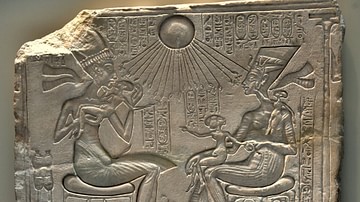
Image
Akhenaten, Nefertiti, & Their Three Daughters
Limestone plaque depicting the Egyptian pharaoh Akhenaten (r. 1353-1336 BCE) on the left holding one of his daughters and Queen Nefertiti (c. 1370 to c. 1336 BCE) on the right with one daughter sitting on her lap and the other resting on...
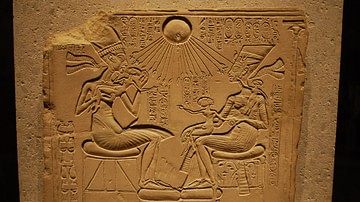
Image
Akhenaten and the Royal Family Blessed by Aten
Akhenaten and the royal family blessed by Aten, limestone relief from Tell el-Amarna, New Kingdom of Egypt, c. 1350 BCE.
Egyptian Museum, Berlin.

Video
Akhenaten, the Sun Disk and the Amarna Period of Egypt
Akhenaten (who was born Amenhotep IV), is best known for his radical changes during his reign like elevating Aten the Sun Disk to the supreme deity, and moving the capital of Ancient Egypt to Amarna, a site which has given its name to the...
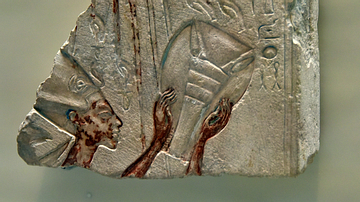
Image
Akhenaten Making Sacrifices
The Egyptian pharaoh Akhenaten (r. 1353-1336 BCE) makes sacrifices to the god Aten. Part of the cartouche of Aten appears on the right upper corner. Part of a temple relief. Painted limestone. From Amarna, Egypt. New Kingdom, 18th Dynasty...
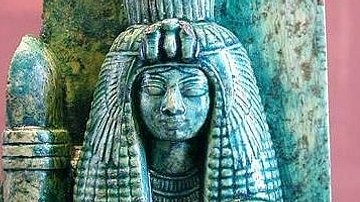
Definition
Tiye
Tiye (also known as Tiy, 1398-1338 BCE) was a queen of Egypt of the 18th dynasty, wife of the pharaoh Amenhotep III, mother of Akhenaten, and grandmother of both Tutankhamun and Ankhsenamun. She exerted an enormous influence at the courts...

Definition
Tutankhamun
Tutankhamun (also known as Tutankhamen and `King Tut', r. c.1336-c.1327 BCE) is the most famous and instantly recognizable Pharaoh in the modern world. His golden sarcophagus is now a symbol almost synonymous with Egypt. His name means `living...

Definition
Ankhsenamun
Ankhsenamun (born c. 1350 BCE and known as Ankhesenpaaten in youth) was the daughter of Akhenaten and Nefertiti of the 18th Dynasty of Egypt. She was married to her father and may have borne him one daughter, Ankhesenpaaten Tasherit ('Ankhesenpaaten...

Definition
New Kingdom of Egypt
The New Kingdom (c. 1570- c.1069 BCE) is the era in Egyptian history following the disunity of the Second Intermediate Period (c. 1782-1570 BCE) and preceding the dissolution of the central government at the start of the Third Intermediate...
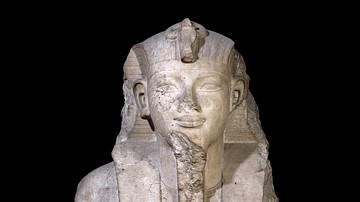
Definition
Amenhotep III
Amenhotep III (c. 1386-1353 BCE) was the ninth king of the 18th Dynasty of Egypt. He is also known as Nebma'atre, Amenophis III, Amunhotep II, and Amana-Hatpa, all of which relate to the concept of the god Amun being satisfied or, as in the...
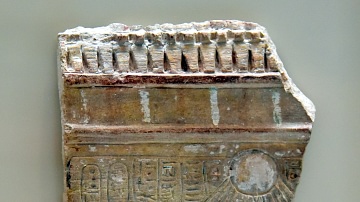
Image
Nefertiti & Akhenaten
Queen Nefertiti (c. 1370 - c. 1336 BCE) ties an ornamental collar around the neck of her husband, Pharaoh Akhenaten (r. 1353-1336 BCE). Part of a stela. Painted limestone. From Amarna, Egypt. New Kingdom, 18th Dynasty, c. 1345 BCE. (The Neues...